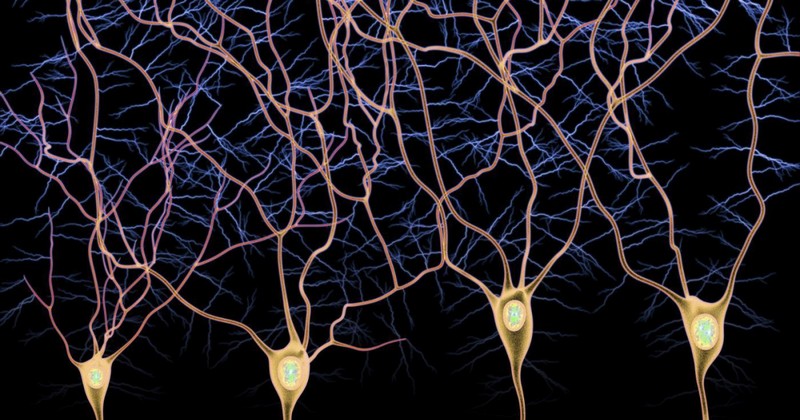Afferent and efferent pathway: the types of nerve fibers.

We explain the functions of the nerve fibers of our central nervous system.
It is natural to associate the concepts "neuron" and "brain". After all, neurons are the type of cell to which we normally attribute the ability to think, reason and, in general, perform related tasks. and, in general, perform tasks related to the intellect.
However, neurons are also an essential part of the nerves that run throughout our body (along with glial cells). This is not surprising, considering what the function of these nerve fibers is: to make certain types of information travel through our organs and cellular tissues.. Now, although all these data transmission pathways basically do the same thing, there are certain nuances and differences between them that make it possible to classify them according to their function. That is why we talk about the difference between the afferent pathway and the efferent pathway.
Afferent and efferent: one letter changes everything
To understand the concepts of afferent and efferent it is very useful to imagine the functioning of the nervous system as cognitive psychologists do, using the metaphor of the computer as a descriptive model of neural networks. use the metaphor of the computer as a descriptive model of neural networks.. According to this metaphor, both the brain and the entire nervous system function in a similar way to a computer; it has one part of its structure dedicated to being in contact with the surrounding environment and another that is dedicated to working with data that it has stored and processed to obtain new information.
Thus, the neurons of the brain and the spinal cord would be this "internal" part of the computer, while the nerves that emanate from the spinal column and reach the farthest corners of the body are the part in contact with the outside.
This last part of the nervous system, called the peripheral nervous systemis where the afferent and efferent pathways, which are the input and output channels, are found. are the input and output channels of the central nervous system, respectively..
The pathways through which sensory information travels
Thus, through the afferent pathways travels all the information that enters through the sensory neurons, i.e., those that transform the information they collect, those that transform the information collected by the senses into nerve impulses.. The efferent pathways, on the other hand, are responsible for propagating the electrical impulses that are destined to activate (or deactivate) certain glands and Muscle groups.
Thus, if we were to stick to a simple explanatory scheme of what an afference and an efference are, we would say that the former informs the central nervous system about what is happening in the rest of the body and the data about the environment that it receives, while the efferent neurons are in charge of "transmitting the orders" and initiating the action.
Similarly, the word afferent is used to designate the information that travels along these pathways of the peripheral nervous system, while the term efferent is used to refer to the output (or output) of data that goes from the central nervous system to muscle fibers and glands responsible for releasing all kinds of substances and hormones.
A help to remember better
The distinction between afferent and efferent is very useful in understanding how we perceive and act on the environment, but can also be quite problematic because it is easy to confuse the two terms and use them to mean the opposite of what is meant. and use them to mean the opposite of what is meant.
Fortunately, using simple mnemonic tricks it is very easy to remember what each is, and the fact that these words are only differentiated by one letter means that by remembering one you can also remember the other. For example, the "a" in "afferent" can be related to the a in arrival (and the "e" of "efferent" with the first letter of "sending".
Pawn neurons?
Afferent and efferent pathways suggest a hierarchical functioning of the nervous system: while some neuronal groups inform about what is going on in the rest of the body and transmit orders to implement plans, strategies and protocols for action.others make the decisions and give the orders that others will carry out. However, the functioning of our nervous system is not as simple as this schematic view of the journeys made by nervous information throughout our body might suggest, for two basic reasons.
The first is that afferent and efferent neurons do not just passively transmit information: they also cause it to be transformed. What reaches the spinal cord and the glands and muscles is a burst of data whose form depends largely on how it has encountered each and every neuron through which it has traveled.
The second reason is that, while it is true that decision-making depends more on the brain than on the neural networks of the peripheral nervous system, it is not clear who rules over whom, it is not clear who rules over whom, because they all occupy a place in a data cycle..
Ultimately, afferent neurons send information to the brain without which action plans cannot be initiated, and the way in which the efferent pathways transmit the information will have an impact on the body and the environment that will then affect the afferent neurons and, therefore, the brain. Think, for example, of putting away a box of cookies to avoid the temptation to snack between meals: a change in the environment causes us to think and feel differently than we would with the box of cookies in sight.
In short, afferent and efferent neurons may have a simpler and easier task to study than nerve cells in the brain, but they still play a vital role in our daily lives.
(Updated at Apr 14 / 2024)